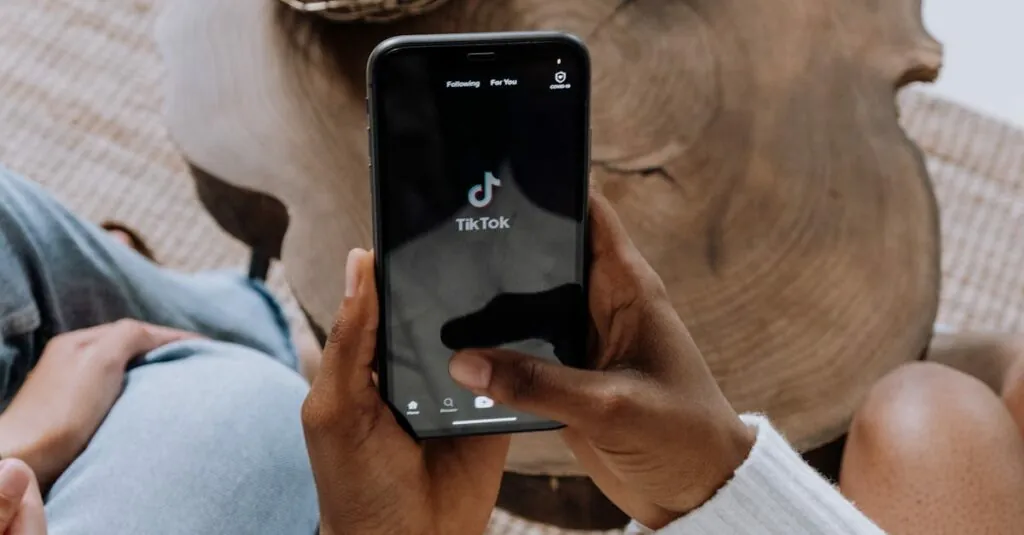Table of Contents
ToggleEver looked at your iPhone and thought, “This app icon just doesn’t reflect my fabulous personality?” You’re not alone! Changing an icon isn’t just a techy endeavor; it’s a chance to express yourself and give your home screen a makeover that even Marie Kondo would approve of.
Understanding Icons on iPhone
Personalizing app icons enhances the overall aesthetic of the home screen. Icons on iPhone serve both functional and expressive roles, reflecting users’ tastes and preferences.
Importance of Custom Icons
Custom icons allow individuals to showcase their unique style. Personal expression plays a significant role in choosing designs that resonate with users. Individuality becomes apparent when icons match personalities and preferences. The act of customizing can transform a standard home screen into a personal art piece. A visually appealing layout often improves user experience by making navigation more enjoyable.
Default vs. Custom Icons
Default icons provide basic functionality and brand recognition. Users often find these familiar but may desire more personalization. Custom icons, however, offer creativity beyond standard designs. Choices include colors, shapes, and graphics that align better with users’ tastes. Custom icons can provide a fresh look, improving visual satisfaction and engagement with the device. Selecting between default and custom options depends on personal preference and desired aesthetic impact.
Step-by-Step Guide to Change an Icon on iPhone
Changing app icons offers a unique method to enhance the iPhone experience. Personalization transforms the home screen aesthetics, allowing distinct styles to shine.
Using Shortcuts App
Open the Shortcuts app to create customized icons. Select the “+” icon to add a new shortcut. Tap “Add Action,” then choose “Apps” and find the app you want to change. Under “Scripting,” pick “Open App” and select the target app again. Next, tap the three dots in the shortcut card to access settings. In the settings, tap “Add to Home Screen.” Enter a name for the shortcut and tap the icon to choose an image. Select “Choose Photo” or “Choose File” to upload a new icon. Save the changes by tapping “Add” at the top right. This method combines function and style seamlessly.
Modifying App Icons with Photos
Utilizing Photos allows further customization of app icons. Start by choosing a photo that represents the app theme. Open the Photos app, and select the desired image. Tap the Share icon and choose “Use as Wallpaper” to adjust the image as needed. Instead of wallpaper, though, use it as an icon through Shortcuts. After setting the chosen image, repeat the shortcut creation steps. This option provides flexibility, enabling unique visuals to align with user expression. Save the final icon to the home screen, enhancing visual coherence with personal taste.
Tips for Creating Unique Icons
Creating unique icons enhances personal expression on an iPhone home screen. Thoughtful design choices can transform a device into a visual masterpiece.
Choosing the Right Image
Selecting the right image is crucial for custom icons. Users should consider personal interests and favorite colors to ensure a meaningful connection. Simplicity often works best; clean images stand out against a busy background. Abstract designs also create a striking contrast with default icons. Icons can incorporate personal photos or artwork, adding a unique touch. Additionally, ensure any image used has high resolution; this guarantees clarity and quality.
Maintaining Aesthetic Consistency
Aesthetic consistency plays a pivotal role in overall home screen design. Matching colors and themes across icons creates harmony. Users might choose a specific color palette, ensuring all icons adhere to that scheme for a cohesive appearance. Shapes also matter; using similar shapes or styles can further unify the look. Grouping icons by category, such as games in one area and productivity in another, helps maintain visual order. Regularly reviewing and updating icons ensures they stay fresh and relevant to personal style.
Common Issues and Troubleshooting
Changing an icon on an iPhone can lead to a few common issues. Users should be aware of these challenges to ensure a smooth customization experience.
Icon Not Changing
Sometimes the new icon doesn’t appear as expected. First, restarting the iPhone often resolves this issue. Users should check if the Shortcuts app has access to the app being customized. If it doesn’t, adding it through Settings may help. Additionally, clearing the Shortcuts cache can sometimes prompt the new icon to display. If the custom image isn’t showing, verifying that the selected photo is in an appropriate format is beneficial. JPEG or PNG images tend to work best.
App Not Recognized
Occasionally, the customization process fails because the app isn’t recognized. Users might try updating the app to the latest version since outdated apps may cause compatibility issues. Ensuring that the app is installed on the device is essential; a missing installation leads to recognition problems. Moreover, if the app is part of a specific folder, removing it from the folder can resolve visibility issues. Additionally, checking app permissions in Settings might uncover restrictions that hinder recognition.
Changing an icon on an iPhone is more than just a simple task; it’s a chance to showcase individuality and creativity. By following the steps outlined in the article, users can transform their app icons into unique representations of their personal style. Custom icons not only enhance the visual appeal of the home screen but also improve the overall user experience.
With the right images and thoughtful design choices, anyone can create a cohesive and aesthetically pleasing interface. Embracing this customization allows for a more personalized device that truly reflects one’s tastes and preferences. Whether opting for vibrant colors or minimalist designs, the possibilities for expression are endless.







